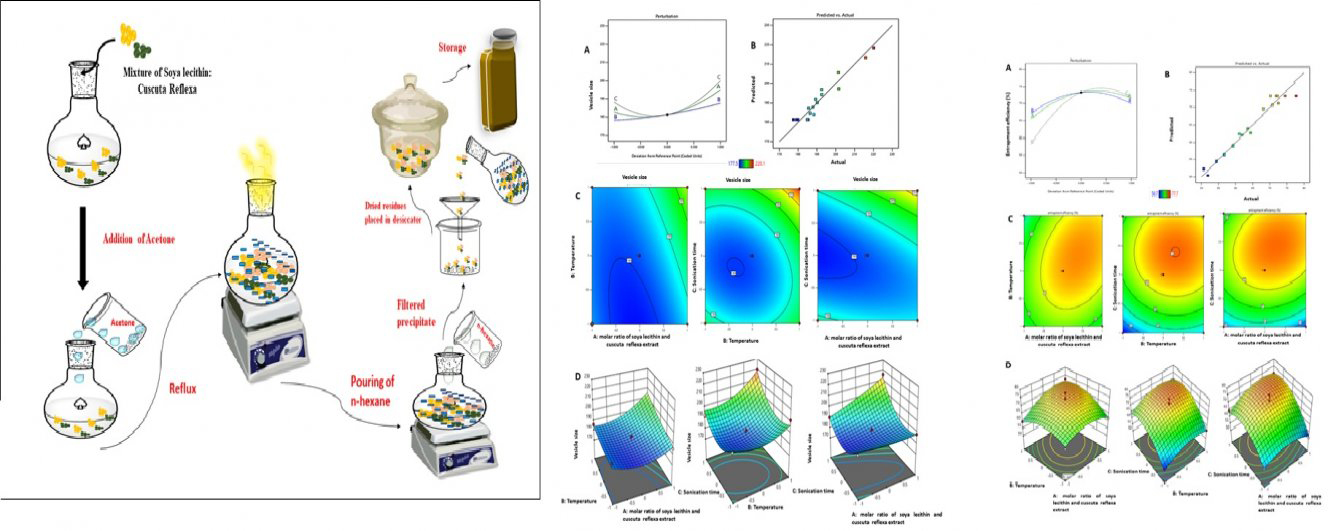- 著者
- Saad M. Alshahrani
- 出版者
- Japan Oil Chemists' Society
- 雑誌
- Journal of Oleo Science (ISSN:13458957)
- 巻号頁・発行日
- vol.71, no.5, pp.671-683, 2022 (Released:2022-04-29)
- 参考文献数
- 43
- 被引用文献数
- 3
The purpose of this study is to determine whether the complexing hydroalcoholic extract of Cuscuta reflexa (HECR) with phosphatidyl choline increases its bioavailability. As a result, a novel phytosomal delivery system for the HECR-soya lecithin complex was developed (HECR-phytosome). The HECR-phytosome complex was synthesized and characterized as phytovesicles. The formulation was prepared using a variable concentration of soya lecithin (1:1-1:3 percent w/v), a temperature range of (45-65°C), and sonication time (4-8 min). Optimization of HECR-loaded phytosomal formulations was performed using Design Expert software. A three-factor, three-level Box-Behnken design was used to optimize this HECR delivery system, as dependent variables, vesicular size and entrapment efficiency were evaluated using a Box Behnken factorial design. Further characterization of the optimized formulation included vesicle size, PDI, zeta potential, entrapment efficiency, FTIR, DSC, TEM, and in vitro release. Vesicle sizes ranged from 173.5±6.17 nm to 215.9±6.53 nm, and response rates for entrapment efficiency ranged from 52.9±1.65 to 77.2±1.1%. The uniform structure and spherical shape were demonstrated by transmission electron microscopy. Among the drug release kinetic models, the formulation followed the Higuchi model (R2 = 0.9978), releasing 96.3±3.7% of the polyphenol and flavonoids phytoconstituents from HECR-loaded phytosomes in 12 hours, compared to 49.3±2.5% in the plain extract. In addition, the optimized formulation passes the stability test. Therefore, the results demonstrated that phytosomal nanocarriers have the potential to increase the bioavailability of Cuscuta reflexa extract.
